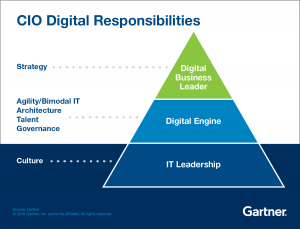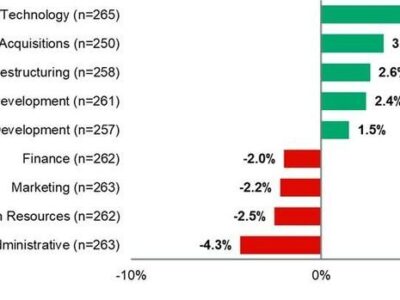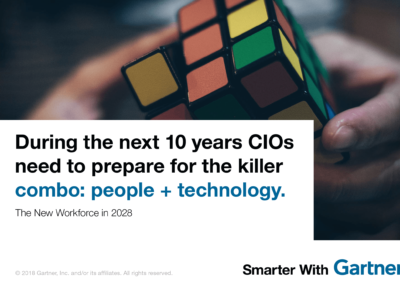Seize the opportunity to build capabilities and credibility from the bottom up.
CIOs can focus on the following main responsibilities to define their role in digital business strategy:
Promote three IT subcultures: The digital and the physical get blurred with digital innovation, so culture can’t be addressed in a stopgap fashion. Nurture three distinct subcultures in IT: 1) The Operator, focused on keeping things running and improving; 2) The Innovator, focused on speed and exploration; 3) The Guardian, focused on leading and balancing innovation with risk.
Develop a bimodal capability: Bimodal is an approach that enables your enterprise the flexibility to innovate while ensuring that day-to-day business requirements and regular performance goals are met. Getting the business engaged in the digital agenda is difficult if you don’t establish this capability.
Renovate the IT core: Many enterprises today have old, monolithic enterprise applications in a closed business architecture. Renovation initiatives include investing in improved data access, big data analytics, integration and cloud infrastructure.
Uncover and develop talent: Digital requires new skill sets, which is why so many CIOs cite talent as one of their biggest innovation obstacles. Beyond training and developing existing employees, digital leaders can overcome the talent gap through external hires, acquisitions and partnerships.
Move from IT governance to enterprise digital governance: Digital business requires the ability to assess and advise value/risk tradeoffs at digital speed. You’ll need to bring executives, suppliers and other external partners more closely into these processes and carefully delineate responsibilities within digital-domain teams.
Champion digital business strategy: A key component of the business strategy is the digital strategy, which is supported by the IT strategy. Identify disruptive trends, threats, talent and partners, and then champion proposals and priorities that will help your enterprise survive and thrive in an increasingly digital world.
Evaluate and build on your foundation
The six capabilities described here show a progression from the CIO as IT leader to the CIO as digital business leader. The ease and speed at which CIOs who aspire to digital leadership can attain it obviously depends on the circumstances of the enterprise where they lead.
In a business that lacks significant technical DNA, for example, the CIO is often asked to drive as well as support digital innovation. Relationship dynamics, such as the IT department’s credibility and engagement with the business, are also critical baseline factors.
Ultimately, said Mr. MacDorman, “CIOs who aim to be recognized as digital business leaders need to have a vision of what needs to be achieved and the ability to enlist business leaders in the discussion.”
Mr. MacDorman, Gartner analysts, and industry leaders will discuss key issues facing the CIO during the Gartner CIO Leadership Forum, February 21-23 in Phoenix, AZ. You can follow news and updates from the event on Twitter using #GartnerCIO.
View the complimentary webinar, 2016 CIO Agenda: Building the Digital Platform.
Gartner clients can read more in the report, New CIO Responsibilities in a Digital Business World.
For more CIO and Digital Business related articles visit Smarter With Gartner website.











